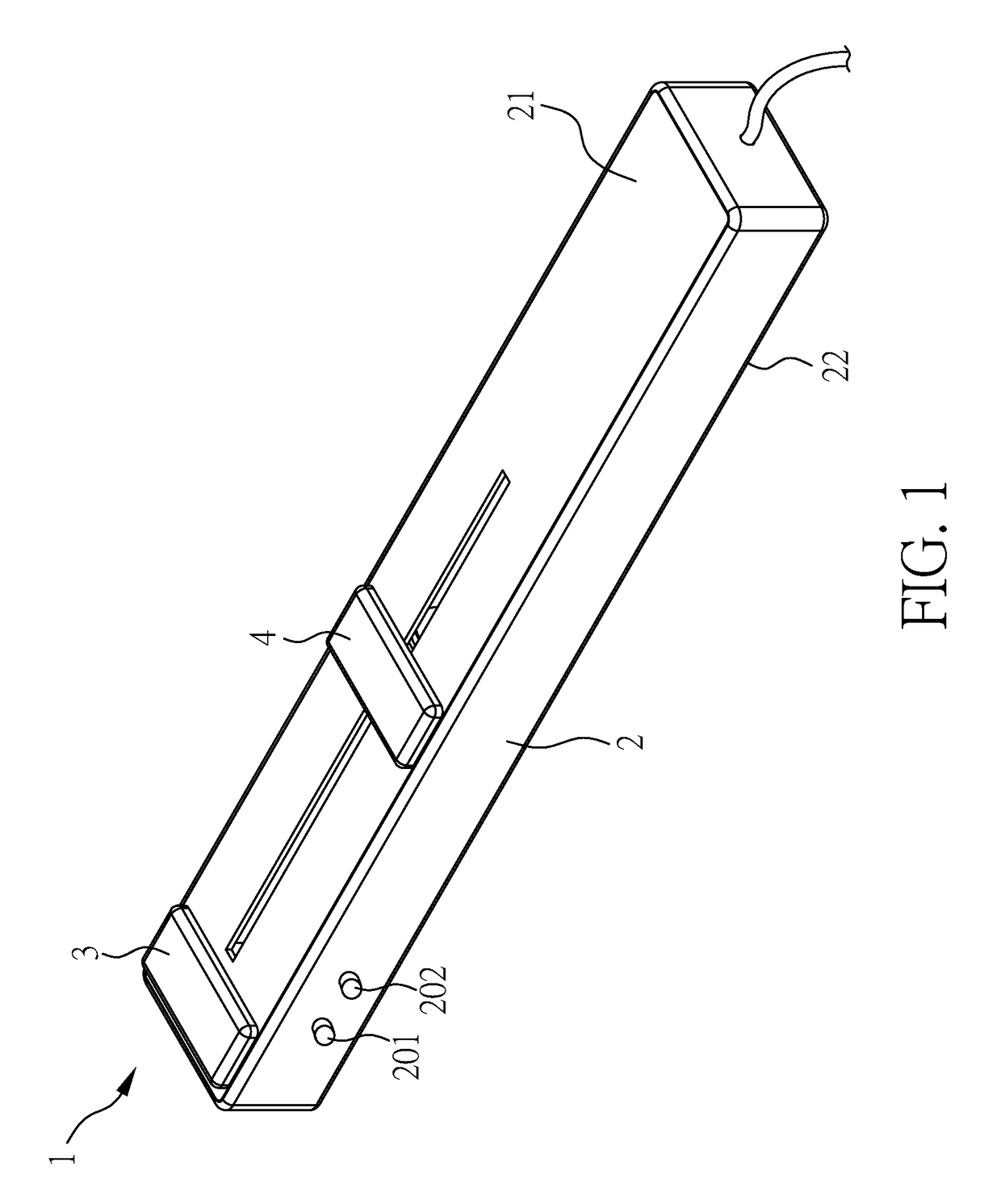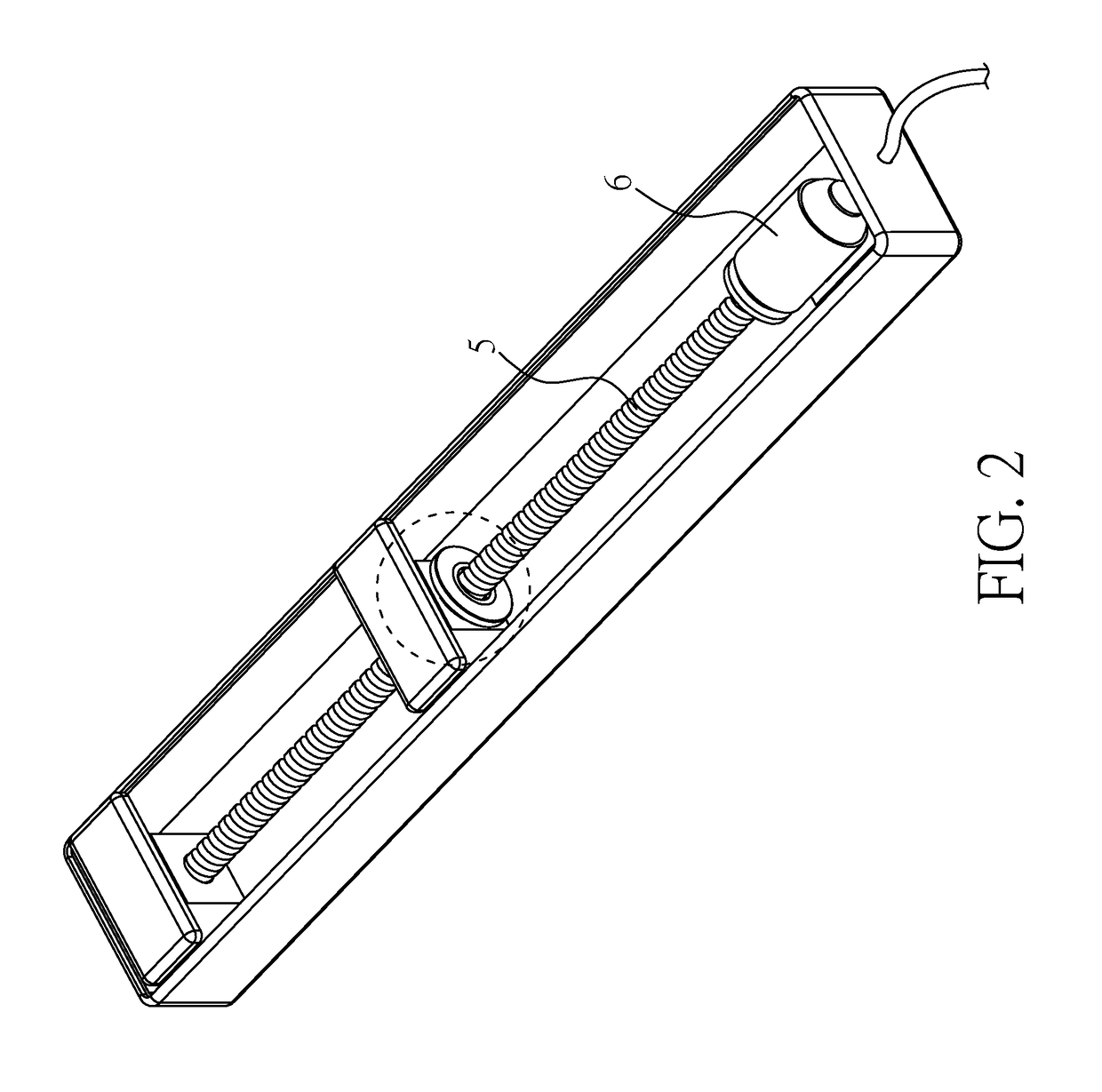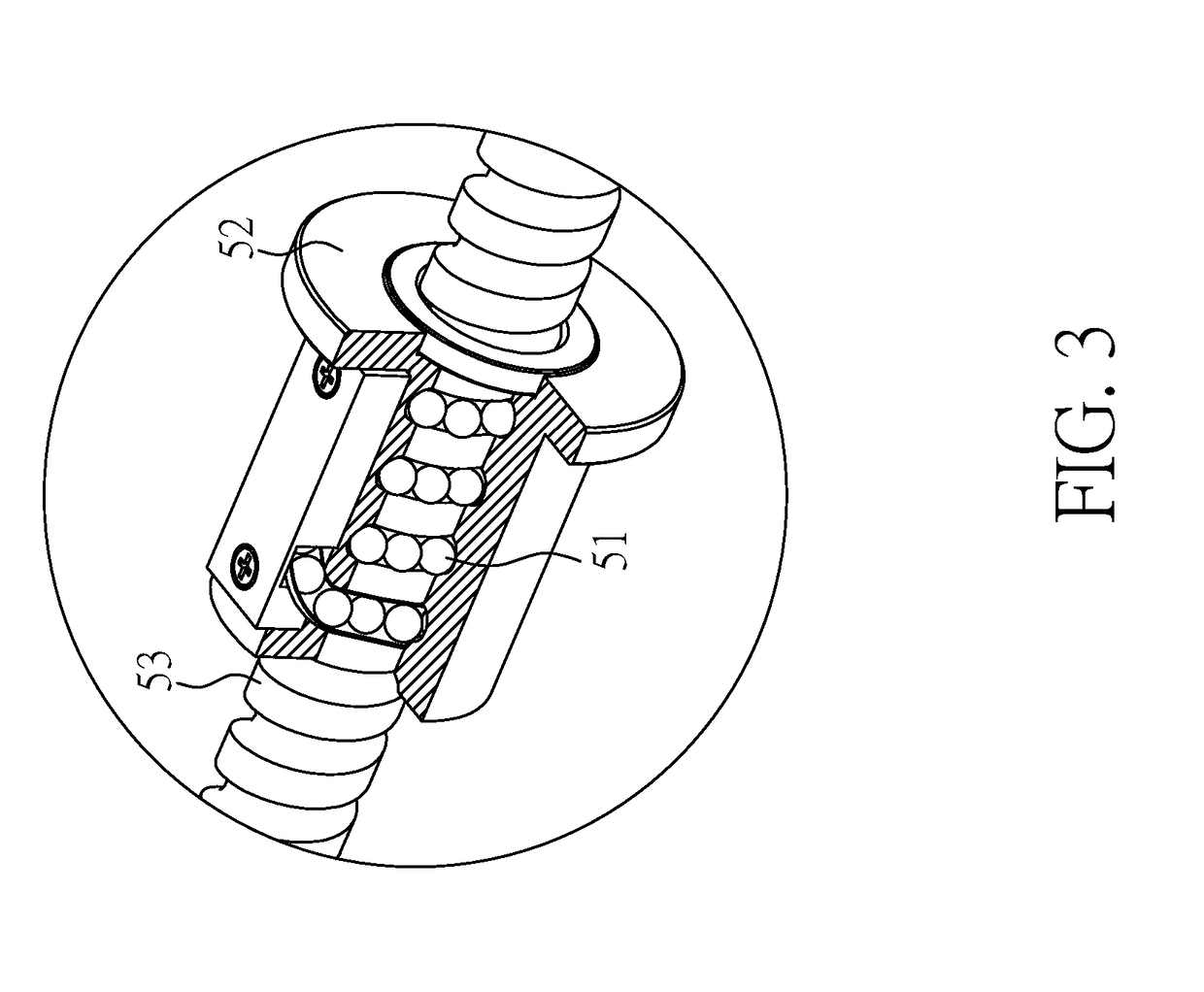Non-invasive radio-frequency ablation system
a radiofrequency ablation and non-invasive technology, applied in the field of non-invasive radiofrequency ablation systems, can solve the problems of reducing invasive rfa treatment techniques, and thermal damage to peripheral non-targeted tissue, so as to reduce the risk of treatment complications and eliminate bleeding or perforation
- Summary
- Abstract
- Description
- Claims
- Application Information
AI Technical Summary
Benefits of technology
Problems solved by technology
Method used
Image
Examples
embodiment 1
[0034]FIG. 1. is a schematic diagram of an ablation device of a first preferred embodiment. FIG. 2 is a partial schematic diagram of the embodiment of FIG. 1; FIG. 3 is a schematic diagram showing a partial enlargement of the moving unit of FIG. 2. This embodiment includes: an ablation device 1 comprising: a substrate 2 having a first surface 21; a first electrode 3 disposed on the first surface 21; a second electrode 4 disposed on the first surface 21 and adjacent to the first electrode 3; a moving unit 5 electrically connected to the second electrode 4 for moving the second electrode 4 to regulate the distance between the second electrode 4 and the first electrode 3; and a radio frequency generator (not shown) connected to the ablation device 1 for providing a radio frequency current to the first electrode 3 and the second electrode 4. The moving unit 5 is a ball screw, as shown in the partial enlargement diagram of FIG. 3. The ball screw 5 improves poor positioning and prevents d...
embodiment 2
[0036]FIG. 4 is a schematic diagram of an ablation device of another embodiment of the present invention. The ablation device of the non-invasive radio-frequency ablation system in the present embodiment is similar to that of Embodiment 1 except for the following differences.
[0037]Referring to FIG. 4, the ablation device in the present embodiment may optionally comprise a cooling unit 7, a temperature sensing unit 8, and a treatment depth sensing unit 9. The cooling unit 7 may be disposed on the first surface 21 of the substrate 2 and between the first electrode 3 and the second electrode 4. In the present embodiment, the ablation device is illustrated as including each of the cooling unit 7, the temperature sensing unit 8 and treatment the depth sensing unit 9. However, any one or more of the cooling unit 7, the temperature sensing unit 8 and treatment depth sensing unit 9 may also be omitted.
[0038]The cooling unit 7 may include a cooling chip and / or a refrigerant to lower the temp...
embodiment 3
[0041]FIG. 5 is a schematic diagram of an ablation device according to another embodiment of the present invention. The ablation device of the non-invasive radio-frequency ablation system in the present embodiment is similar to that of Embodiment 1 or 2 except for the following differences.
[0042]Referring to FIG. 5, the ablation device of the present embodiment may optionally comprise a cooling unit 7, a temperature sensing unit 8, and a treatment depth sensing unit 9. The cooling unit 7 may be disposed on the first surface 21 of the substrate 2 and between the first electrode 3 and the second electrode 4.
[0043]The temperature sensing unit 8 may be disposed on the second surface 22 of the substrate 2 and opposite to the first electrode 3, but the location of the temperature sensing unit may be varied without departing from the invention.
[0044]The treatment depth sensing unit 9 may be disposed on the second surface 22 of the substrate 2 and opposite to the cooling unit 7, but the loc...
PUM
 Login to View More
Login to View More Abstract
Description
Claims
Application Information
 Login to View More
Login to View More - R&D
- Intellectual Property
- Life Sciences
- Materials
- Tech Scout
- Unparalleled Data Quality
- Higher Quality Content
- 60% Fewer Hallucinations
Browse by: Latest US Patents, China's latest patents, Technical Efficacy Thesaurus, Application Domain, Technology Topic, Popular Technical Reports.
© 2025 PatSnap. All rights reserved.Legal|Privacy policy|Modern Slavery Act Transparency Statement|Sitemap|About US| Contact US: help@patsnap.com



